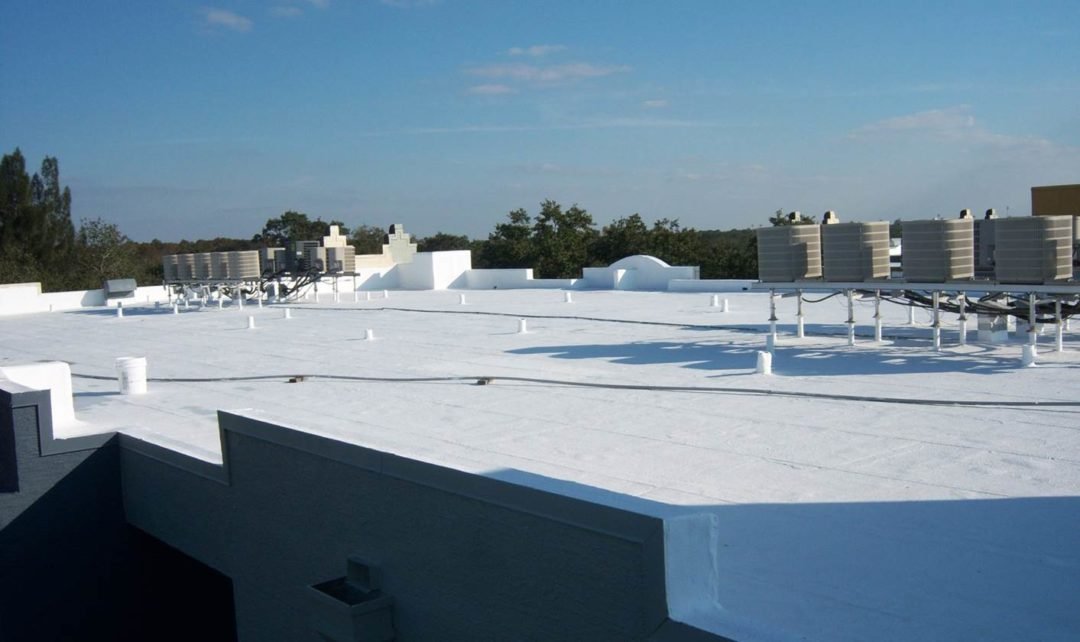
ELASTOMERIC COATING
The final layer of almost every roofing material, be it foam, metal, asphalt, modified bitumen, shake, tile, or others, typically involves the application of a coating substance. These coatings encompass a wide array of materials, including acrylic, aluminum, rubberized aluminum, polyurethane, asphalt, polymers, cement, granules, rock, and more. Known for their exceptional durability and elastomeric nature, these coatings are highly elastic, resembling rubber, and have the ability to regain their original shape after an impact. In essence, they bounce back from incidents such as hailstones or debris landing on the roof.

Why Roof Coating?
Despite roofs being typically comprised of several layers, including a waterproof membrane, insulation, the roofing material itself, and an adhesive, the addition of a coating serves to extend the life of the roofing material.
Preventing Roof Degradation:
Roof coating’s primary function is to shield metal, foam, asphalt, or any chosen roofing material from degradation due to weather exposure and general wear and tear. For instance, foam roofs often receive a resilient rubberized coating, further fortifying them against storm damage. Coatings applied to asphalt shingles with granules serve to protect against UV light, enhance color and aesthetics, offer fire resistance, and prevent shingles from sticking together during packaging. Essentially, a proper coating has the potential to significantly extend the life of your roof.
Enhancing Energy Efficiency:
Roofing experts have discovered an additional significant advantage offered by coatings—improved energy efficiency. Opting for a heat-reflective coating, such as one containing aluminum flakes, helps keep roofs cooler in the summer heat. Reflecting heat not only prolongs the life of the roofing material but also provides substantial energy savings for both commercial and residential properties.
Mitigating Urban Heat Islands:
Reflective coatings play a role in addressing the issue of urban heat islands in densely populated areas. Urban regions, dominated by concrete, asphalt, metal, and masonry, tend to absorb and retain heat, causing higher temperatures compared to surrounding rural areas. Properly chosen reflective coatings for roofs contribute to alleviating this problem by reducing the heat absorbed and retained by buildings.
Key Role in Maintenance:
In discussions regarding roof maintenance, professional roofers often emphasize the importance of refreshing the coating on roofing materials. Periodically applying a new layer of coating helps prolong the roof’s lifespan, shields it from damage, and often contributes to energy cost savings.

